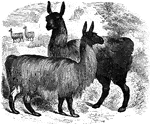Clipart tagged: ‘lama’
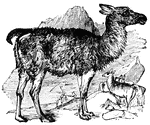
Llama
The llamas of S. America resemble the camel in form and structure. They have, however, no hump, and…
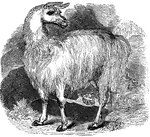
Paco
"Is considerably smaller that the llama, and is never employed as a beast of burden; it is principally…
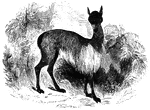
Vicuna
"Its color is reddish yellow on the back and whitish on the belly. It is a wild species, which is principally…
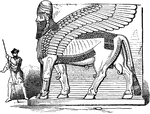
Winged Bull from Nimrud
The Sumerian word lama, which is rendered in Akkadian as lamassu, refers to a beneficient protective…
